Decided to adopt a pedigree dog? In order to prevent bitter disappointment it is recommended to become acquainted with the unique characteristics of the breed and ensure that you will be able to meet its needs
Na’ama Rolnik, SPCA Adoption Counselor and dog trainer
In recent years I have been an adoption counselor and dog trainer in the Society for Prevention of Cruelty to Animals in Israel. In this capacity, and in accordance with the Society’s policies, I try to match up each dog with its new owners to the best of my ability so that the dog will be taken into a home that can meet its needs and take care of it throughout its life.
The dog is considered man’s best friend. Very quickly, it becomes a member of the family and fulfills a meaningful role in our lives, making the choice of which dog to adopt so important. Amongst those wishing to adopt a dog there are those who prefer thoroughbred dogs due to their particular affinity to a certain breed, their outward appearance or their exclusive pedigree. Adoption according to these parameters alone is likely to lead to bitter disappointment, both from the point of view of the owners and that of the dog, since many owners meet up with difficulties associated with providing the special needs of a particular breed and at some point or another, are forced to give the dog away.
There are hundreds of different breeds of dog in the world. Each breed has its own particular character due to its inherent qualities, and also an inclination to suffer certain genetic illnesses according to its breed. Nowadays, when dogs no longer fulfill their roles as were intended when their breed was developed and refined, owners must demonstrate increased responsibility in filling the unique needs of each breed. A Siberian Husky, for instance, is meant to pull sleighs in the snow. Future owners of such a dog must find ways to provide for these needs and take the dog out to use up enough energy in order for it to be a balanced and healthy dog. It is important to understand that adopting a dog on the basis of its outward appearance or its breed is likely to end unhappily and so it is imperative to learn about the selected breed, its temperament and distinctive characteristics, and seriously consider whether the dog is actually suited to its new owners, their home and way of life.
Most of the abandoned dogs in the various societies and municipal dog pounds are mongrels, generally considered healthier animals. In some cases it is possible to discern which breed is predominant while others have undergone generations of crossbreeding with mongrel parentage, making it difficult to tell from which breeds they originate. In these cases it is advisable to observe their behavior and to glean as much information as possible from the most recent owners or from the dog shelters’ adoption counselors.
As stated, the object of this article is not to encourage adoption of purebred dogs, but to provide important information to future adopters, which should be taken into account before bringing a dog home. Needless to say, not all breeds are mentioned in this article; I have chosen to carry out a summary and to write about the most popular breeds in Israel, which I have come across in my work.
Labrador
History and Role: The Labrador is a descendant of hunting dogs, charged with locating fallen prey and bringing it back to its owners.
Distinctive characteristics and unique abilities: With its amazing visual memory, the Labrador is able to remember the location of several fallen birds in different places. In addition to its ability to retrieve objects, the Labrador has a very soft bite. It doesn’t damage or hurt the prey as its bite is gentle, a characteristic that serves to relax its owners automatically when leaving these dogs in the company of small children. In addition, it is an especially active dog, agile, brimming over with self-confidence and stubborn. It is an excellent swimmer, capable of retrieving prey on land and sea, very balanced and almost never aggressive. It has a warm nature, making it a wonderful pet.
Food for thought: A very intelligent dog that is quick to understand but must be strictly trained. The Labrador is considered an excellent family dog thatcan be can be trusted absolutely with children. On the other hand, one must realize that it is a large dog and most children will not be able to take it out on a walk. It is also very energetic, needing a great deal of activity, at least two or three hours of walking and playing each day. In the event that is does not get the required amount of activity, it turns into a small instrument of destruction in the home or yard.
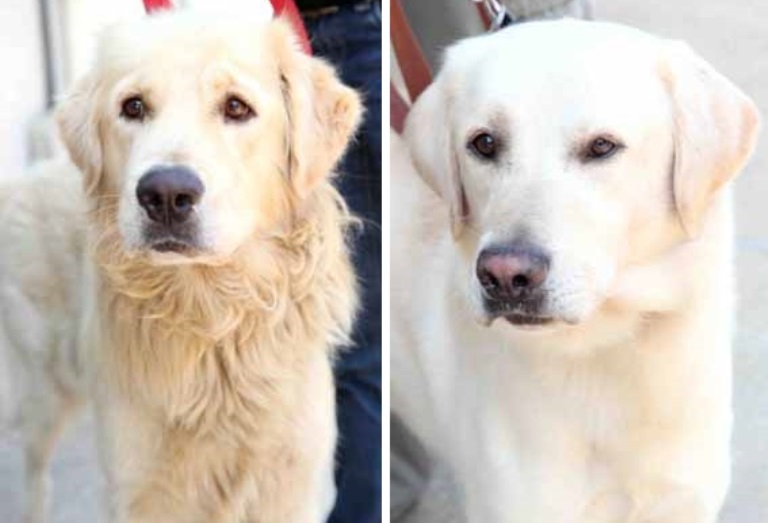
Golden Retriever
History and Role: Like the Labrador, the Golden Retriever is a hunting dog whose role it is to retrieve fallen prey.
Distinctive characteristics and unique abilities: Considered an excellent family dog thanks to its soft bite and balanced nature. The Golden is fast, energetic and active, has a highly developed sense of smell and will follow a trail with great determination. It excels in retrieving water fowl and has an excellent memory. It is totally devoid of aggression, seldom barks and is not suitable as a guard dog. It is gentle, intelligent, calm and balanced, making it an ideal pet.
Food for thought: Golden Retrievers are popular, sociable dogs who don’t like to be left alone. When adopting them, it is important to take into consideration that they need a great deal of activity, at least two to three hours each day, otherwise they will exert their energy by wreaking havoc in the home.
Siberian Husky
History and Role: The Siberian Husky belongs to the Spitz family of dogs, originating in Siberia, where it pulled sleds in the snow.
Distinctive characteristics and unique abilities: The Husky has a high endurance level, is very independent and has a tendency to wander off. As a pet it is very sociable and expresses affection readily. It is not a good guard dog because strangers do not worry it. This breed is generally not aggressive towards other dogs but requires strict, tough training.
Food for thought: It can’t be denied, it is a beautiful, impressive dog to whom one cannot remain indifferent. On the other hand, it is not easy to raise and there are dog-trainers who will claim that it is one of the most challenging breeds. The Husky, who was intended for wide open spaces, needs a lot of activity and will be most frustrated if locked up in a closed house. It has a tendency to wail like a jackal and to cause quite a lot of problems with the neighbors. In addition, it is inclined to wander off and run away so one has to be particularly careful and alert regarding its whereabouts.
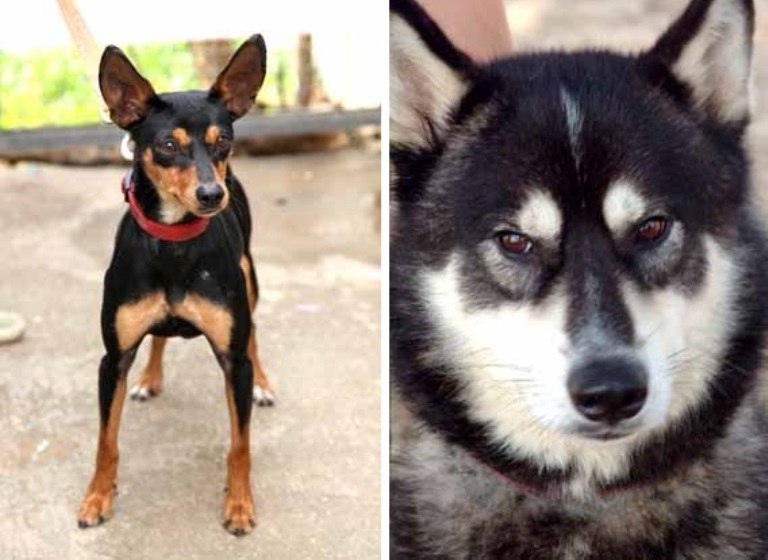
Pincher
History and Role: The Pincher originated in Germany and makes a good guard dog.
Distinctive characteristics and unique abilities: The Pincher is a suitable and balanced family dog, very alert and an excellent guard dog. Though it is small in size, and couldn’t do much damage should it attack, its main role is to give a warning signal by barking when someone threatens its “pack”. It is full of energy, clean, easygoing, sociable, loves to play, is great with kids and can be the perfect playmate.
Food for thought: It is a small dog, suitable for apartment living, but still needs to release its pent up energy and to go for walks. Despite its size, it is recommended to have it trained and to establish limits and discipline. In addition, the Pincher has a great tendency to bark and upset the neighbors.
German Shepherd
History and Role: The German Shepherd is the most popular dog in the world today, thanks to its beauty and abilities. It is used as an explosives detection dog, rescue dog, guard dog, and of course, as a loyal pet.
Distinctive characteristics and unique abilities: Alert, balanced, self-confident, brave and with highly developed attack instincts. On the other hand, it is very obedient, and can always be relied on to be loyal to its owners. It has an excellent sense of smell and is most enthusiastic about working for and pleasing its owners. For this reason it can be trained to a very high level.
Food for thought: A very active dog that needs a huge amount of space to release its energy. It doesn’t like to be left alone and cannot bear to be closed up all day long. This doesn’t mean that it cannot be reared in an apartment, but if that is the case, it will need long and tiring walks. Due to its nature, it is recommended to begin training at an early age and to establish who the dominant figure is, right from the start. It is important to understand that this is a highly capable working dog, and mistakes in its education or lack of opportunity to release its pent-up energy, can lead to aggression and to an uncontrollable pet.
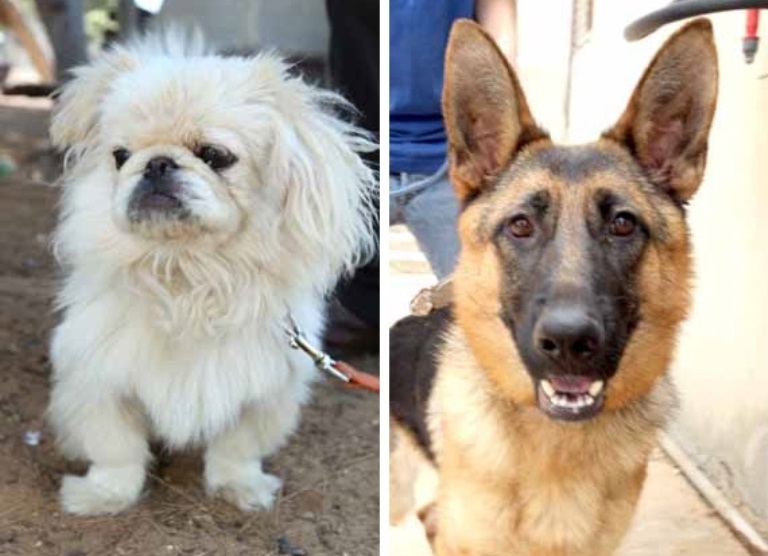
Pekinese
History and Role: The Pekinese originally came from China where it was kept by the Emperors who believed that it would look after them in the next world. Today this dog is generally used as a pet and companion.
Distinctive characteristics and unique abilities: Independent dog, willful and very attached to its owners. Not always patient with children and distant with strangers. The Pekinese barks a great deal and can be an excellent guard dog.
Food for thought: It is important to remember that its small size does not necessarily make it suitable as a family dog. It has no patience for children and will not hesitate to bite should they test it beyond its limits. It must live within the house, is not particularly energetic and will be satisfied with short walks. Its flattened facial structure makes it difficult for it to breathe and cool itself and so it is important not to let it out during the hot, summer hours. In addition, it is important to comb its hair daily and to prevent the hair getting into its eyes by keeping it trimmed.
Poodle
History and Role: This breed originated in France and was initially used as a hunting dog for water fowl such as ducks and geese. Over the years it underwent evolutionary adaptations and was bred in four different sizes, amongst them the toy and miniature poodles that were mainly the dogs that sat on the laps of the noble ladies of those times.
Distinctive characteristics and unique abilities: The poodle is a very active animal, sociable, full of life, athletic and intelligent. It is particularly loyal but is liable to be most possessive. It adapts easily, has an easy-going nature and can be a wonderful pet. It is still a hunting dog in its genes, quite a good swimmer and uses its good sense of smell to quite an extent.
Food for thought: An energetic and bouncy dog, needing a lot of activity. It is important to note that if it is not strictly educated and trained, it may develop behavior problems. One great advantage for many owners is the fact that the poodle is extremely clean and does not shed its hair at all, but on the other hand, it requires combing at least twice a week and haircuts every two months.
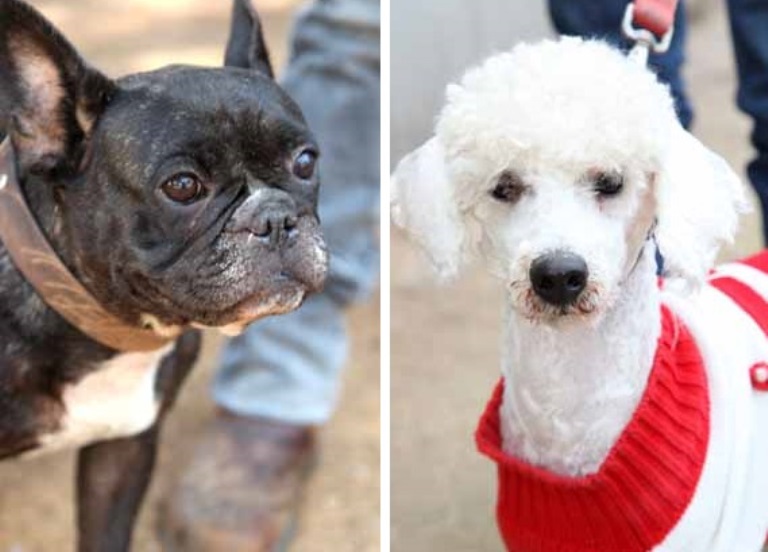
French Bulldog
History and Role: The origins of this breed are, needless to say, in France, where it was used as a guard-dog, and has therefore a strong inclination towards guarding. It is a small dog but built with strong body mass and muscle.
Distinctive characteristics and unique abilities: Active, courageous, tough and with very strong will-power. It can also be very friendly, intelligent and easy-natured. Needs a lot of affection, warmth and love.
Food for thought: Gentle towards children, though generally aggressive towards other dogs. The biggest disadvantage of this breed is possible health problems; it has a very small, flattened nose causing difficulty in breathing, particularly while taking longs walks in hot weather. It is recommended to take note and keep a watch out for eye infections and bald patches that might appear in the creases of the face.
Cocker Spaniel
History and Role: Cockers are skilled hunters, hunting mainly birds and rabbits.
Distinctive characteristics and unique abilities: Cockers have a highly developed sense of smell giving them a great deal of motivation as well as ability to detect game even from a distance of many meters. The American Cocker is a more easy-going breed, more compact, balanced and patient, and is often used as a show dog or as a companion and less as a hunting dog. The English Cocker is more active, energetic, independent and stubborn, with a highly developed hunting instinct, happy and full of life. It is strong-willed and determined but also very affectionate and gentle.
Food for thought: Both the English and American Cockers can live in apartments but they need to be taken out for walks on a regular basis in order to let off steam. Attention must be paid to their long ears which should be checked regularly. Since it is an independent and stubborn dog, it is not always willing to do as it is told and has a tendency to bite, so one must be cautious around children.
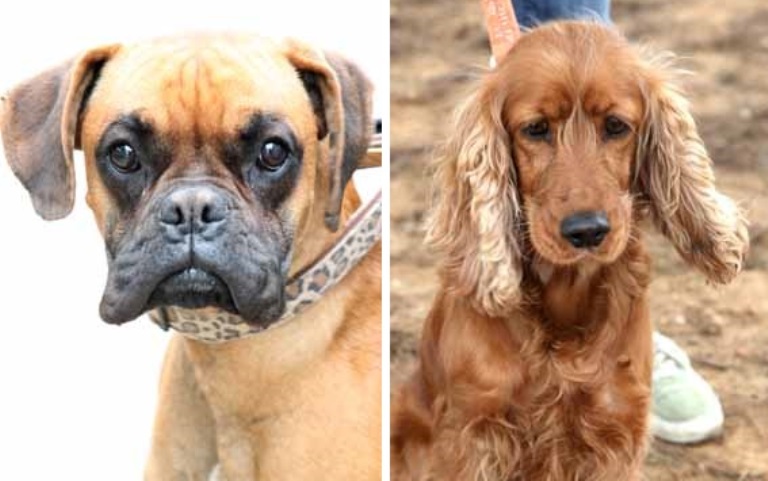
Boxer
History and Role: Originating in Germany, its role was to protect its owners and to attack wild animals, making it a good protecting and guard dog.
Distinctive characteristics and unique abilities: The Boxer is energetic, agile, domineering and fearless when it comes to defending its owners. Most Boxers are very sociable animals, forming strong bonds with their owners and remaining loyal at any price.
Food for thought: This is a large dog with an athletic, muscular build, making it important to begin training at an early age. Boxers remain energetic all their lives therefore they require a great deal of physical exercise.
Jack Russell Terrier
History and Role: Originating in England and named after the man who developed this breed. The objective was to raise a hunting dog that could chase foxes and run into their long and narrow caves in order to root them out.
Distinctive characteristics and unique abilities: A rough type of dog, full of life, fearless and independent, stubborn and strong-willed. As a pet, it is very affectionate and extremely loyal to its owners, and this desire to please makes training relatively easy.
Food for thought: It is important to understand that this is one of the more intelligent breeds and so it needs to be with someone who will challenge it. Though small, it is highly energetic and bouncy, needing a great deal of physical exercise, long walks and, of course, discipline. Since the hunting drive is deeply ingrained in its character, it is not advisable to bring it into a house where there are rabbits and guinea pigs.
Shar Pei
History and Role: Originating in China, where it served as a guard dog, fighting dog, hunting dog (particularly of wild boar) and also as a herding dog.
Distinctive characteristics and unique abilities: Very domineering, might be aggressive towards other dogs and strangers. With its owner, on the other hand, it is easy going and most affectionate.
Food for thought: The Shar Pei is suspicious of strangers, has a highly developed guarding instinct, meaning that it is likely to attack should a stranger enter its territory. Requires strict, though kind, training and, providing it gets enough exercise, it can be raised in an apartment. Its outward appearance is very special and attractive, but it is important to take into account that if one does not keep it clean and take care of its excess skin and wrinkles, serious skin conditions are liable to develop, accompanied by severe body odor.
Terrier
History and Role: There are many types of terriers, most of them small hunting dogs intended to hunt rabbits, foxes and even rats.
Distinctive characteristics and unique abilities: Energetic, bouncy, full of life and smart. Dogs of this breed are in demand mainly because of their easy- going natures, their patience with children and their type of hair which rarely sheds.
Food for thought: Good family dogs, who adapt easily to life in an apartment on condition that they get enough exercise. These dogs, that often enjoy their owners’ inclination to spoil them, need training and establishing of clear boundaries. Their coats should be cared for, combed twice a week and cut every few months, or at least tied into a topknot to prevent the hair from getting into their eyes.
Doberman
History and Role: Originating in Germany it is actually a result of multiple crossbreeding with highly developed guarding and fighting instincts.
Distinctive characteristics and unique abilities: The Doberman is fearless and will not hesitate to protect its territory and its owners. It is blindly loyal to its owners, full of life, courageous, energetic, determined, and may act impulsively, unless this tendency is curbed. This can be achieved by the owners being relaxed, gentle but assertive.
Food for thought: Not everyone can raise a Doberman. It is important to start training at an early age and to show it who is the boss. One must take into account that the Doberman is wary of strangers and has a highly developed guarding instinct, even when it is intended only as a pet. It is a very emotional dog that does not like conflicts, needs walks and cannot bear to be tied up in a yard.
Border Collie
History and Role: Herding dog originating in England, whose role it was to protect and gather the flock.
Distinctive characteristics and unique abilities: Very energetic, determined and naturally gentle. Though it is a working dog with very strong and dominant genes, it is loyal to its owners and easy to train due to its high intelligence. It takes an interest in strangers but is not generally aggressive, has an excellent sense of smell but has a greater tendency to use its sense of sight. With the flock it mainly looks at the sheep and hypnotizes them with its stare when they stray from the herd.
Food for thought: Charming, intelligent and a distinctively beautiful dog. However, it is preferable to let it remain a herding dog and not bring it to live with a city family that cannot supply its particular needs. It is virtually impossible to root out the herding dog instinct from the Border Collie, making the adjustment to city life very difficult. It can be a good family dog but one should be aware that if the need to exert a lot of energy is not satisfied, the dog is liable to destroy the house. It tends to chase after bicycles or cats, and almost anything that moves fast is likely to knock it off balance and make it want to catch it. In the absence of a flock, it can herd the children into a group.

